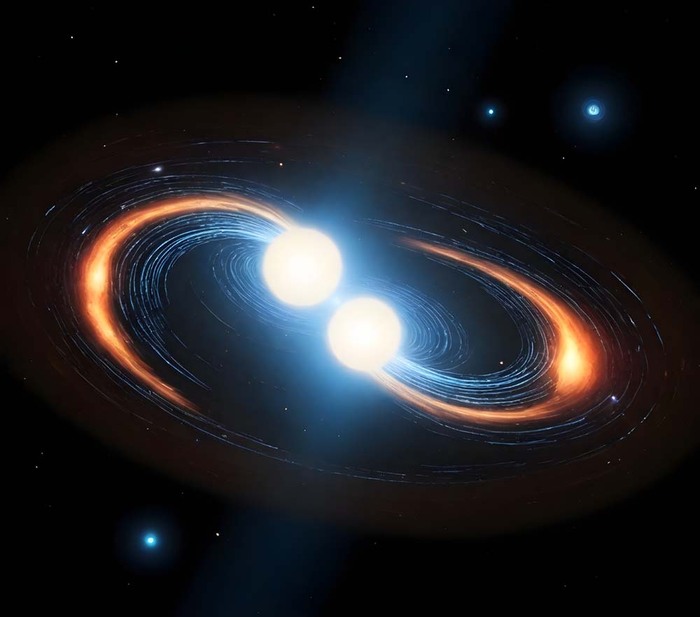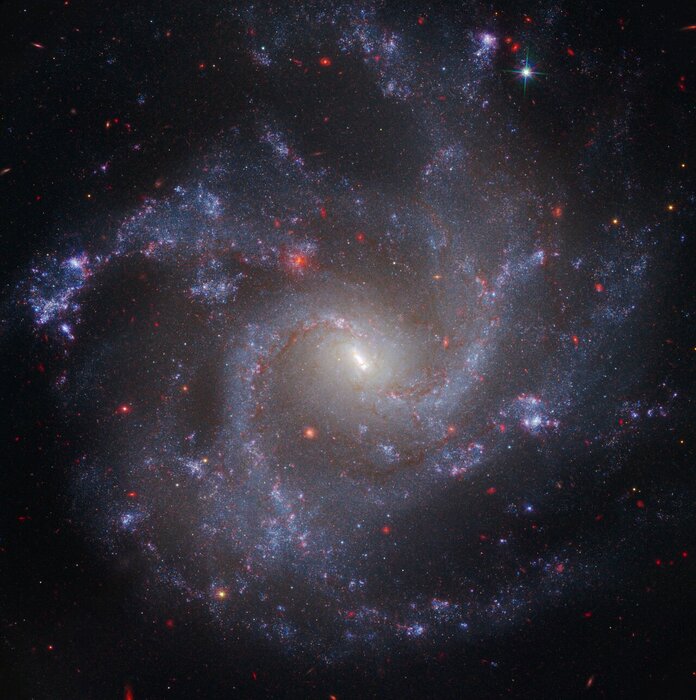According to NASA, telescopes are "time machines".
How is it that looking into the universe is always looking back into the past?
Baltimore - The James Webb Space Telescope (JWST) has been in use for many months, providing scientists with data for their research.
The US space agency Nasa writes on its website: “Telescopes can be time machines.
Looking into space is like looking into the past.” But how does that work?
NASA explains: "It sounds magical, but it's actually quite simple: light takes time to travel great distances in space and reach us."
In fact, you don't need a $10 billion telescope located 1.5 million kilometers from Earth in space to see into the past.
Any human eye can do that.
This is because light takes time to travel through space and arrive on earth.
Since the light is very fast, in everyday life you don't notice that it is moving at all.
Surname: | James Webb Space Telescope (JWST) |
|---|---|
Type: | Space telescope for infrared astronomy |
Begin: | December 25, 2021 |
Distance to Earth: | 1.5 million kilometers |
Operator: | NASA, ESA and CSA |
Costs: | $10 billion |
Diameter primary mirror: | about 6.5 meters |
Size sun shield: | approx. 21x14 meters |
How to look into the past with a telescope
In fact, it is traveling at an incredible speed of 299,792,458 meters per second (about 1.08 billion km/h) - the speed of light.
Looking at the moon or the sun far from the earth, the phenomenon becomes clearer.
The moon is about 390,000 kilometers away from the earth, its light needs about 1.3 seconds for this distance.
So when you look at the full moon, you see it as it looked 1.3 seconds ago.
This also applies to the sun: light travels the distance of 150 million kilometers in eight minutes and 20 seconds.
So you always see the sun as it was just over eight minutes ago - a glimpse into the past.
The further away a celestial body is, the further one looks into the past
The further a celestial body is from Earth, the further back you look.
Earth's closest neighboring galaxy, the Andromeda galaxy, is about two and a half million light-years away.
The Virgo Galaxy Cluster, a collection of galaxies in our cosmic neighborhood, is about 60 million light-years from the Milky Way.
The light we see from these galaxies today was emitted when the age of dinosaurs came to an end on Earth.
If you reverse the perspective, an interesting approach emerges: if there is life in the Virgo galaxy cluster looking down through a telescope, it is looking at a planet populated by dinosaurs and other prehistoric reptiles - humans do not exist yet .
These surprises are hidden in the images from the James Webb telescope
These surprises are hidden in the images from the James Webb telescope
James Webb Space Telescope looks deep into the universe - and into the past
The James Webb Space Telescope is equipped to look particularly far into the past.
This works mainly because the telescope works in the infrared range.
Many stars and galaxies cannot be seen with the naked eye or small telescopes simply because they are too far away and their visible light is no longer perceptible.
However, JWST can also detect celestial bodies more than 13 billion light-years away in the infrared range - meaning that they existed more than 13 billion years ago.
Researchers want to use JWST to look back to the first hundreds of millions of years after the Big Bang.
They are on the right track: the James Webb space telescope has already found some of the oldest galaxies in the universe - they existed 325 to 460 million years after the Big Bang.
This article was created with the help of machines and carefully checked by the editor Tanja Banner before publication.










/cloudfront-eu-central-1.images.arcpublishing.com/prisa/KMEYMJKESBAZBE4MRBAM4TGHIQ.jpg)


